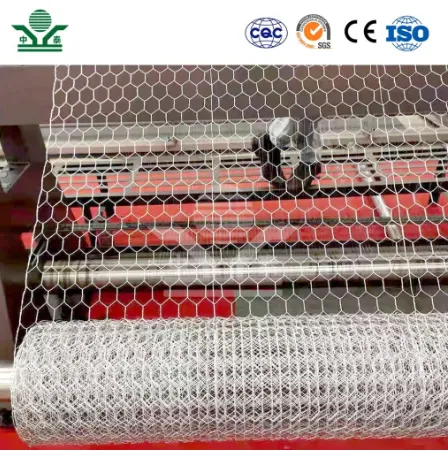Understanding Metal Bar Grating A Comprehensive Overview
Metal bar grating is a versatile and durable product frequently utilized across a variety of industries for flooring, walkways, drainage covers, and safety applications. This innovative structural component is engineered in such a way that it allows for maximum strength while maintaining a lightweight design. With an increasing demand for sustainable and efficient construction materials, metal bar grating has become an essential choice for builders and architects alike.
Composition and Manufacturing Process
Metal bar grating is primarily made from different types of metals, including carbon steel, stainless steel, and aluminum. The choice of material depends significantly on the application's requirements, including environmental conditions, load-bearing capacity, and aesthetic considerations. For instance, stainless steel is often chosen for applications requiring corrosion resistance, such as in chemical plants or coastal regions.
The manufacturing process involves the combining of parallel bars and crossbars. The parallel bars run in a straight line, with the crossbars positioned at regular intervals. This design not only provides a sturdy surface but also contributes to the efficient drainage of liquids, which is crucial in environments such as manufacturing facilities and food production plants. The bars can be welded or pressed into position, creating a robust framework ready to withstand heavy loads and repeated use.
Applications of Metal Bar Grating
The applications of metal bar grating are vast and varied. One of the most common uses is in industrial settings, where it serves as platforms, walkways, and steps that facilitate safe movement across production areas. The open design of bar grating allows for excellent visibility while reducing the risk of slips and falls since liquids and small debris can easily pass through.
Additionally, metal bar grating is frequently employed in outdoor settings, such as in parks and public spaces. It can be used as drainage grates in streets or for covering utility holes, promoting safety and accessibility while contributing to aesthetic harmony in public design.
metal bar grating

In the construction of commercial and residential buildings, metal bar grating proves to be a reliable material for stair treads and safety barriers, offering an effective solution to meet building code regulations related to safety. Moreover, the lightweight nature of these gratings simplifies installation, reducing labor costs and time on construction projects.
Benefits of Metal Bar Grating
The benefits of incorporating metal bar grating into design and construction cannot be overstated. Its strength-to-weight ratio ensures that it can bear heavy loads without the risk of warping or buckling over time, making it an ideal choice for high-traffic areas. Furthermore, its open design aids in ventilation and heat dissipation, which is important in environments containing machinery that generates heat.
Another significant advantage is the ease of maintenance associated with metal bar grating. In industrial settings, where spills and messes are common, the open structure allows for simple cleaning—keeping areas neat and safe without requiring extensive resources or time.
Moreover, metal bar grating is also environmentally friendly. Its longevity means that it does not need to be replaced frequently, reducing waste. Many manufacturers also engage in sustainable production practices, ensuring that the materials sourced for bar grating are processed responsibly.
Conclusion
In summary, metal bar grating is a highly adaptable material that excels in both functionality and safety. Its diverse applications across various industries highlight its significance in modern construction, while its multitude of benefits—from strength and safety to ease of maintenance—underscore its value as a fundamental building material. As industries continue to evolve and seek sustainable solutions, metal bar grating stands out as an exemplary choice that meets the demands of contemporary architecture and infrastructure. Whether in industrial environments or public spaces, its importance in promoting safety and efficiency remains undisputed.
-
Why Galvanized Trench Cover Steel Grating Resists Corrosion
NewsJul.10,2025
-
The Versatility and Strength of Stainless Expanded Metal Mesh
NewsJul.10,2025
-
Load Calculations in Steel Grating Platforms
NewsJul.10,2025
-
Keeping Pets and Kids Safe with Chicken Wire Deck Railing
NewsJul.10,2025
-
Hole Diameter and Pitch for Round Perforated Metal Sheets
NewsJul.10,2025
-
Aluminium Diamond Mesh in Modern Architecture
NewsJul.10,2025
Subscribe now!
Stay up to date with the latest on Fry Steeland industry news.

